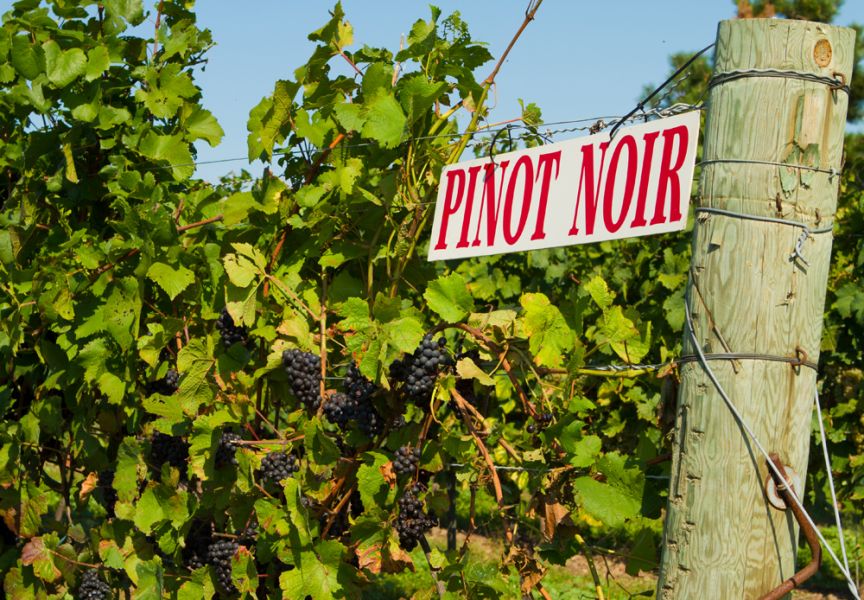Straight Up Stats
Latest numbers report incredible gains
Oregon winemakers are nearly finished bringing in what they predict will be another record-shattering harvest, which is saying something — because the 2014 production numbers are extraordinary.
The 2014 Oregon Vineyard and Winery Census released this summer once again shows that the state’s wine industry continues to grow and expand, thanks primarily to Pinot Noir, the state’s signature grape.
Compiled by the Southern Oregon University Research Center, the data confirms the state’s overall production from last fall’s harvest marking the third consecutive year of double-digit gains. Overall production in 2014 topped 78,000 tons, an increase of 39 percent over the previous year.
“Oregon wine enjoyed another headliner year across the board fueled by consumer demand,” said Ellen Brittan, chairwoman of Oregon Wine Board, which released the report. “Market and sales trends continue to validate the growing acceptance of the exceptional quality wines being produced in all regions of the state.”
Every region posted impressive gains, but the northern Willamette Valley, where Pinot Noir dominates, led the way, accounting for nearly two-thirds of overall production and up 41 percent over 2013.
Production of Pinot Noir, one of 16 varietals tallied by researchers, hit 45,239 tons, up from 32,239 the previous year. The growth resulted from more acreage planted, more harvested and greater yields per acre.
In second place, Pinot Gris again shattered last year’s record with 13,701 tons produced — up from 10,321. Chardonnay placed third with 3,972 tons; Riesling fourth at 2,194 tons; and Syrah fifth, with 1,370 tons.
Additional acreage in all AVAs continues to be put into grape production. All but three varietals — Merlot, Müller-Thurgau and Sauvignon Blanc — posted increases in planted acreage, yet Müller-Thurgau, grown primarily in the Willamette Valley, saw production gains.
Overall, sales of Oregon wine are trending up at 11 percent over the past year, according to the global marketing research firm Nielsen.
In terms of production value, Pinot jumped from $85.7 million in 2013 to nearly $114 million last year. Pinot Gris hit more than $19 million, up from $16 million.
There is also evidence that the industry’s international marketing efforts in recent years are paying off, with the state posting an extraordinary 50-percent jump in export sales.
The growth trend also continues in new wineries. Planning officials in the Pinot Noir hot spot of Yamhill County say new wine industry-related construction in the last couple of years has been very busy. Statewide, the total number of wineries grew to 676, and the number of vineyards in Oregon topped 1,000 for the first time, hitting 1,027 — an 8-percent increase.
“The Oregon wine industry is extremely healthy,” Brittan said. “Oregon’s increase in sales compares with an industry average of just 4 percent.”
Brittan also noted how Oregon continues to enjoy a “stellar reputation” for producing exceptionally fine wine. The much-respected magazine The Wine Advocate, recently rated 357 Oregon wines representing 12 varietals from 13 regions at 90 points or higher.
That quality commands the highest average-per-bottle price of any wine region in the world. Again, according to Nielsen, Oregon’s average per-bottle price is $15.59. Globally, it’s $7.15, and nationwide, it’s less than seven dollars.
But the industry appears poised for more growth thanks to what Wine Enthusiast Magazine calls “the rise of the iGeneration,” that 60-million strong market of new wine drinkers born in 1995 or later. They’re a tech-savvy bunch expected to use social media to trade notes on what they’re drinking and liking.
That’s also true of older consumers. According to a report released earlier this year by the Wine Market Council, a national industry group, 62 percent of millennial wine drinkers and 40 percent of GenX consumers are also turning to online outlets such as Facebook and Twitter to discuss wine.
David Bates is a freelance reporter who lives in McMinnville.













